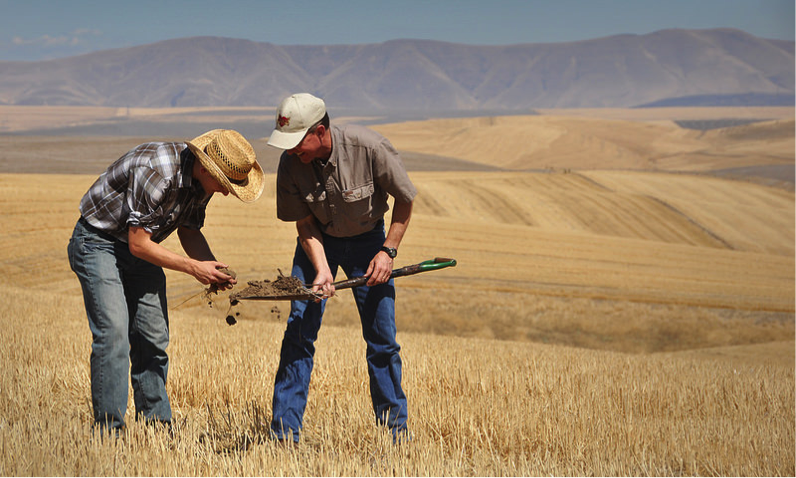
US Department of Agriculture
Soil consists of numerous working parts that when at balanced levels, make the perfect recipe to house and grow healthy crops. There is not a one-answer-fits-all approach when it comes to healthy soil, since many factors affect the state of the soil. Here are a few factors to consider to improve the health of your soil.
Build Organic Matter
Made up of carbon compounds formed by living organisms, organic matter is a key indicator of healthy soil.
Organic matter acts as a sponge, draining well during wet seasons and retaining water in drier seasons. It also helps build the soil’s biomass through supporting soil microbes. While high levels of organic matter are ideal, building it up can be a lengthy process.
Cover Crops
Building organic matter does not happen overnight. More than two years can pass before seeing measurable results. Cover crops are one practice which can help build organic matter. If nutrients and organic matter levels are at a healthy starting point, cover crops can help maintain and increase these levels. Soil sampling the field will show the current levels of organic matter, fertility, and pH to give an idea of what organic levels are currently available in the field.
Cover crops help maintain the nutrient levels which are already present in the soil. Soil health can benefit greatly from using cover crops. These benefits include, but are not limited to, protection from wind and water erosion, shade on the soil surface, and creating a habitat for beneficial microorganisms which strengthen the soil. In addition to the soil benefits cover crops provide benefits in weed control by covering bare soil and providing competition to weeds. Cover crops can also help preserve the nutrients from the previous crop through the next crop season.
No-Till
Pairing no-till with cover crops can further build organic matter levels within a field. Practicing no-till is a game of patience since results are not always easy to see for the first couple years. With cover crops and no-till, fields are not as satisfyingly groomed in the fall or spring and require a longer drying and warming period before spring planting.
No-till requires patience, but the benefits can be worth it. No-till practices can help reduce weather risks and help make soil moisture more manageable. These practices will require thoughtful planning and adapting to the changes in the weather. No-till farming practices can be affected more by geography and weather conditions than some traditional farm management practices.
In addition, labor costs and time may decrease with no-till, but planning time may increase proportionately. When done correctly, no-till can increase soil health and help you cultivate high quality crops that will help increase profits.
Like most good things in life, healthy soil can be worth waiting for. Longer lease agreements are also a consideration if you are considering cover crops and no-till practices as the longer timing would allow enough time to improve the soil health and benefit both the landowners and tenants. When it comes to having nutrient rich, healthy soil, sticking it out for a few years may be a worthwhile payback long-term.
Original Source: Leaders of In-Furrow Technology, West Central

